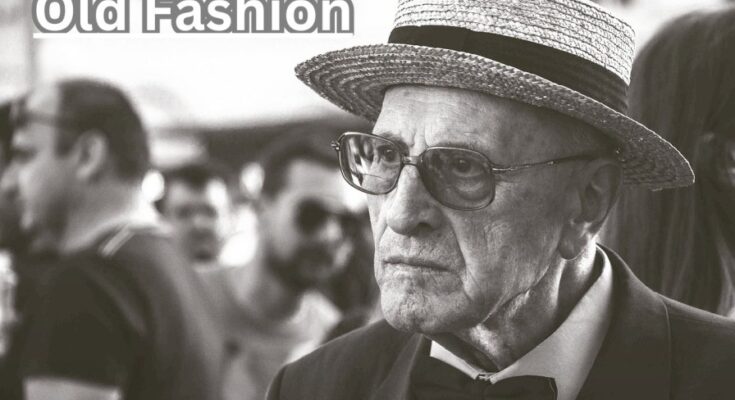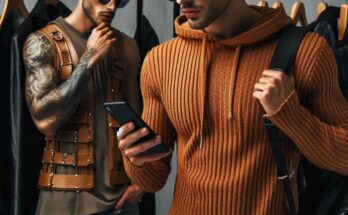In an age where fashion trends can shift with the speed of social media, the enduring allure of “old fashioned” style remains a testament to timeless elegance and sophistication.
This term conjures images of vintage dresses, classic suits, and accessories that have stood the test of time.
Old fashioned style is not merely about nostalgia; it’s a celebration of quality, craftsmanship, and the enduring appeal of sartorial standards that have shaped our understanding of elegance and grace.
This article explores the facets of old fashioned style, its historical roots, and why it continues to captivate hearts in the modern world.
The Historical Roots of Old Fashioned Style
Old fashioned style finds its roots in various epochs, each with distinct characteristics that have contributed to the collective understanding of what this term entails.
The early 20th century, particularly the 1920s through the 1950s, is often regarded as a golden age of fashion.
During this period, fashion was marked by meticulous craftsmanship and a strong sense of propriety and occasion.
The 1920s: Flapper Fashion and the Jazz Age
The 1920s was a decade of liberation and change, reflected vividly in its fashion.
The flapper dress, with its straight silhouette, dropped waist, and intricate beadwork, symbolized the newfound freedom and exuberance of women.
This period also saw the rise of Coco Chanel, whose designs championed simplicity and elegance, eschewing the restrictive corsets of the past in favor of comfort and style.
The 1930s: Elegance Amid Adversity
The Great Depression of the 1930s brought about a shift towards more conservative and practical fashion.
Despite the economic hardship, Hollywood glamour provided an aspirational counterpoint.
Bias-cut gowns, designed to cling to the body and highlight its natural curves, became popular.
Designers like Madeleine Vionnet and Elsa Schiaparelli introduced innovative cuts and surrealist influences, adding a touch of artistry to the era’s fashion.
The 1940s: Utility and Glamour in Wartime
World War II had a profound impact on fashion, leading to the introduction of utility clothing. Restrictions on fabric and materials meant that clothing had to be practical and durable.
However, this period also gave rise to the iconic ‘New Look’ by Christian Dior in 1947, which celebrated femininity with its nipped-in waist and full skirt, a stark contrast to the austerity of wartime attire.
The 1950s: The Pinnacle of Old Fashioned Elegance
The 1950s is often seen as the epitome of old fashioned style.
Post-war prosperity allowed for a return to glamour and opulence. The decade was characterized by hourglass silhouettes, petticoats, and the use of luxurious fabrics.
Designers like Dior, Balenciaga, and Givenchy set the tone for an era that valued refinement and sophistication.
Icons like Audrey Hepburn and Grace Kelly embodied this style, their wardrobes becoming benchmarks of elegance.
The Enduring Appeal of Old Fashioned Style
While fashion continues to evolve, the appeal of old fashioned style endures for several reasons:
Timeless Elegance
Old fashioned style is synonymous with timeless elegance.
Unlike fleeting trends, it emphasizes silhouettes, cuts, and fabrics that have been proven to enhance the wearer’s natural beauty.
The focus on quality over quantity means that pieces from this era can remain stylish for decades.
Craftsmanship and Quality
In the past, fashion was characterized by meticulous craftsmanship.
Garments were often handmade, with attention to detail that is rarely seen in mass-produced fashion today.
Vintage clothing, therefore, not only offers unique designs but also superior quality.
The fabrics used, such as silk, wool, and cotton, were chosen for their durability and luxurious feel.
Sustainability
In a world increasingly aware of the environmental impact of fast fashion, old fashioned style offers a sustainable alternative.
Vintage clothing encourages the reuse and recycling of garments, reducing the demand for new production.
By investing in timeless pieces, consumers can build a wardrobe that lasts, rather than contributing to the cycle of disposable fashion.
Individuality
Old fashioned style allows individuals to express their unique personality and taste.
In a time when fashion is often homogenized, wearing vintage or vintage-inspired pieces sets one apart.
It signals an appreciation for history and a desire to stand out from the crowd.
How to Incorporate Old Fashioned Style into Modern Wardrobes
Incorporating old fashioned style into modern wardrobes can be a delightful way to blend the past with the present. Here are some tips to do so:
Start with Accessories
Accessories are an easy entry point into old fashioned style.
Vintage hats, gloves, scarves, and jewelry can add a touch of elegance to any outfit.
A classic handbag or a pair of retro sunglasses can instantly elevate your look.
Mix and Match
Combine vintage pieces with modern clothing to create a balanced look.
A vintage blouse paired with contemporary jeans or a modern dress accessorized with vintage jewelry strikes the perfect harmony between old and new.
Invest in Quality Basics
Timeless pieces such as a well-fitted blazer, a classic trench coat, or a pair of tailored trousers can serve as the foundation of an old fashioned-inspired wardrobe.
Look for garments made from high-quality fabrics and with impeccable construction.
Embrace Vintage Prints and Fabrics
Incorporate vintage prints and fabrics into your wardrobe.
Florals, polka dots, and plaids are classic patterns that have endured through the ages.
Fabrics like silk, linen, and wool not only feel luxurious but also drape beautifully.
Visit Vintage Shops and Thrift Stores
Exploring vintage shops and thrift stores can be a treasure hunt for unique pieces. Look for garments that speak to your personal style and have the potential to become cherished items in your wardrobe.
Icons of Old Fashioned Style
Several fashion icons have embodied old fashioned style, leaving a lasting legacy that continues to inspire contemporary fashion lovers:
Audrey Hepburn
Audrey Hepburn’s elegant and understated style has made her a perpetual fashion icon.
Known for her chic simplicity, she popularized the little black dress, ballet flats, and capri pants.
Her collaboration with designer Hubert de Givenchy resulted in some of the most memorable fashion moments in cinematic history.
Grace Kelly
Grace Kelly’s impeccable style epitomized the glamour of the 1950s.
Her wardrobe was a blend of classic Hollywood and European sophistication. The Grace Kelly wedding dress, with its high neck, long sleeves, and full skirt, remains one of the most iconic bridal gowns of all time.
Marilyn Monroe
Marilyn Monroe’s sultry and glamorous style has made her a lasting symbol of old fashioned sex appeal.
Her figure-hugging dresses, red lips, and platinum blonde hair are instantly recognizable.
Despite her tragic life, Monroe’s influence on fashion endures.
James Dean
James Dean’s rebellious style, characterized by his leather jacket, white t-shirt, and jeans, defined a generation and became a cornerstone of old fashioned cool.
His untimely death only cemented his status as a fashion icon, representing youthful defiance and charisma.
Conclusion
Old fashioned style is more than a mere nod to the past; it is a celebration of enduring elegance, quality craftsmanship, and sustainable fashion choices.
By embracing the timeless appeal of vintage clothing and accessories, individuals can cultivate a unique and sophisticated personal style.
Whether through the classic silhouettes of the 1950s or the avant-garde designs of the 1930s, old fashioned style offers a rich tapestry of sartorial inspiration that continues to captivate and inspire.
In a world where trends come and go, the charm of old fashioned style remains a steadfast beacon of true elegance.





